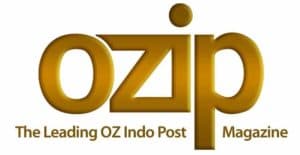In today’s fast-paced world, everyone wants to be more productive. Fortunately, there is an ever-increasing number of tools, many of them available online and across multiple devices, that promise to help us achieve our coveted goals.
Choosing the best productivity tools depends on a number of factors, ranging from the business size, type, and location to understanding where and how we, as individuals and teams, can work more efficiently. That is why any list of the most useful tools for any business starts with time tracking tools to help you determine what kind of tasks take up your time and where you might find opportunities to be more productive.
Two of the best time tracker applications are:
Rescue Time – Once installed, this application runs in the background and analyzes your daily work pattern and how much time you spend on each activity.
Toggl – This robust time tracker is popular with freelancers because it plays well with others, be they mobile devices or other software tools.
Four of the best tools for achieving better communications are:
Slack – This popular messaging platform not only helps collaborators and co-workers communicate over distances and in the same office, it also helps organize the conversations and keep them all in-house. Users can message each other individually or collaborate with an entire group across both mobile devices and desktop computers.
Evernote – Everyone takes notes, at meetings, during presentations, when reading email or even surfing the web. This handy tool gives you a place to store your notes as well as a means of organizing them that allows you to access information when and where you need it, from your computer or mobile device.
Google Drive – Version control can be painful in many organizations, especially if more than one person is working on a document. That is why Google Drive is such a great asset. It makes tracking changes a breeze, supports a variety of file types from PDFs to photos and stores it all in the cloud, so everything is available from anywhere you have internet access.
Tettra – This indispensable tool is not widely known, making it your secret productivity weapon. Tettra is a centralized knowledge base and knowledge management system that puts vital information at your fingertips.
Most businesses organize what they do in terms of projects or products. Managing projects has even become a career path for some. The two popular productivity tools especially useful in keeping projects on track are:
Asana – Asana has been around since 2008, making it one of the most robust and stable tools for project management available. You can create unique tasks for each project or develop templates which can be used repeatedly across your business. Asana also allows you to create strategic calendars, set reminders and send requests between team members.
Trello – This visual project management app helps individuals and teams see their workflow, which can make it easier to keep projects on track. Trello is versatile and plays well with other software and app, including Slack, Google Drive and Evernote, allowing everyone to know where a project stands with a quick glance.
Keeping projects on track is great, but sometimes you need something to keep you on track. These final two productivity tools are task managers that will help you get more done by doing one thing at a time:
Hello Focus – More than just a to-do list, Hello Focus helps you prioritize tasks so you can work more efficiently. It also supports multiple views so you can see what you or your team are working on today, this week or this month.
TaskQue – A free tool which uses algorithms to balance workloads. This is a fantastic tool for managers because it helps reduce employee burnout and overload. Simply group similar resources and assign a task to a group before tracking it to completion. IT is also completely cloud-based.
Productivity is a difficult thing to master. Hopefully, these ten tools will help you along your journey and allow you to reclaim some of your valuable time.
Disclaimer: The Materials are provided for general information purposes only and are not intended as professional advice and should not be substituted for, or replace, such professional advice.
Contributor: Virda Ersan



















